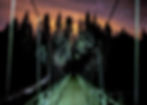LABERINTO




Laberinto by Elisabeth Biondi
Alejandro Chaskielberg grew up in Buenos Aires. Perhaps because he lived in an urban environment, nature, once discovered, became his inspiration. In 2014, he travelled with his one and a half year old daughter Lara to remote Patagonia, where he discovered the El Hoyo labyrinth. He was mesmerized: The labyrinth seemed to transform everyone who meandered through it. Children became elfin, adults became childlike. Everyone seemed under a spell as they made their way through the maze.
Created by Claudio Levi and Doris Romera, it was a symbol for nature regained. Claudio was from Buenos Aires had settled in El Hoyo, next to El Bolsón—a counter-culture community, which had attracted individuals from all over the world. He met and fell in love Doris who had grown up nearby. Together they planted the labyrinth on land ravaged by fires caused by drought in 1987. Over the years a number of fires had burned savagely and had spread instantly through invasive pine trees, which had been planted by national government for fast growth in the 1970’s.
For Chaskielberg, the labyrinth was a timeless place. He decided to take nighttime pictures using the lighting technique he had created for his earlier award-winning Paraná River Delta project on which he worked from 2007-2010. Cinematic lighting, particularly the nighttime scenes of Peter Greenaway’s 1988 film Drowning by Numbers, was his inspiration. The photographs were made with different lanterns, at full moon only, in exposures of about 10 minutes. He soon realized, however, that in order to capture the labyrinth’s power of transformation, he had to reach beyond documentary photography and decided to crate his own cinematic scenarios.
Chaskielberg, a photographer who also works as a cinematographer, decided to put to use his cinematic experience to fully capture the magic of the labyrinth. Inspired by Stanley Kubrick’s The Shining, which famously concludes in a hedge maze, he took on the role of director. He created scenarios – he painted trees, used torches, moved people around, had them pretend to sleep on the ground and stretch out on the top of the hedges. In effect, he created a magical piece of land art that he then documented.
Chaskielberg’s photographs visualize the feelings people experience while wandering through the giant maze. He created tableaus and made light visible. The images are spectacularly beautiful and seductive, showing us the transformation –and the fragility – of nature

























Book

Laberinto, 2017
Published by Ediciones India